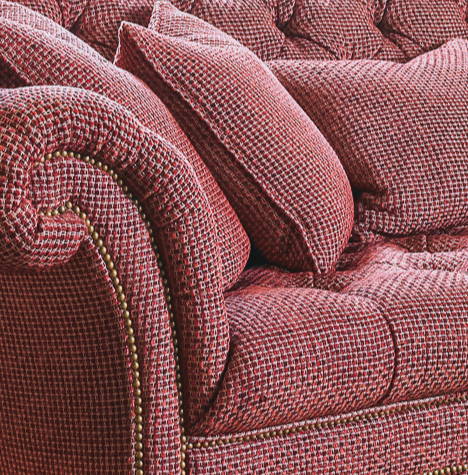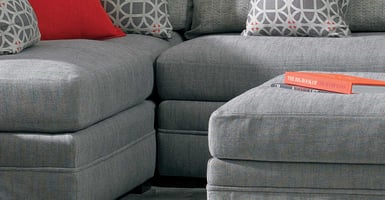We’ve come to the third part of our series exploring the difference between a $1000 sofa and an $4000 sofa.
By now, you've probably decided that it is worth spending the extra money to get a good quality frame and suspension system, but does the same go for the cushions you will sit on day every day?
Is there a significant difference between a high-end and a low-end cushion, and how will that play out over the life of your sofa? I’m so glad you asked.
Before we get into it, you should know that when you buy a good quality frame and a long-lasting suspension system you will typically get good cushions as well. Even so, it’s always good to know what cushions you are getting and how much life you can expect from them.
Let's start off by talking about the two different types of seat cushions you'll find in 90% of the sofa market.
Foam Cushions
The main ingredient in any sofa seat cushion is foam. But not all foam is created equal.
Soy-Based Foam
You may find soy-based cushions, marketed as "environmentally friendly" foam. Keep in mind that it is only a percentage of the foam that is soy-based. The majority is still made up of polyurethane. This is important because if too much of the foam is made of soy it will have an unpleasant odour.
One unfortunate side-effect of foam is off-gassing. Some people believe that because a soy seat cushion contains soy that it won't off-gas. This is simply not true. Although it might off-gas slightly less it will still off-gas and may not be as healthy as some salespeople will lead you to believe.
Memory Foam
You likely know about memory foam mattresses. Memory foam cushions normally have a thin layer of similar memory foam on the top of the sofa cushion.
Most memory foams are heat activated to conform to your body shape. This has positives and negatives.
On the upside, when your warm back-side sits on the cushion it will conform very nicely to your body. On the downside, that bottom-shaped indent doesn’t disappear the moment you get up. That may not seem like a big deal until you stand up after sitting on your sofa and watch the imprint of your backside sloooooowly fade away in front of your guests!
Foam Density
Most commonly in sofa cushions you will find regular polyurethane foam but even standard has many different types and qualities. One thing to look for is a high-density foam.
Most manufacturers use foam with a density rating of between 1.5 lb and 2.5 lb. That number is simply the weight of a 12"' x 12" x 12" block of the foam. The denser the foam, the longer it will last and the more costly it is. As we’ve seen time and again in this series, cost often correlates with quality and longevity.
In the home furnishings industry 1.8 lb density would be the most common foam used in seat cushions but when you are looking at the higher end manufacturers they are typically using a 2.4 lb density. You can expect the cushion cores of a sofa with 1.8 lb density seat cushions to last you 3-5 years with regular use. If you are buying a sofa with 2.4 lb density cushions it would not be unusual to get 10+ years out of them with proper rotation and flipping.
Lastly. there is an HR (High Resiliency) foam that is is also used in many of the best quality sofas. While all foams will deteriorate somewhat with time, an HR foam will not deteriorate as quickly as a non-HR foam.
The takeaways here? If you want a sofa to last a long time, look for a higher density HR foam. That, or spring down.





